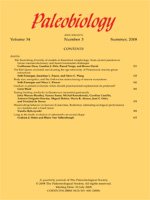Edge-drilling is an unusual predation pattern in which a predatory gastropod drills a hole on the commissure between the valves of a bivalve. Although it is faster than wall drilling, it involves the potential risk of amputating the drilling organ. We therefore hypothesize that this risky strategy is advantageous only in environments where predators face high competition or predation pressure while feeding. The high frequency of edge-drilling (EDF, relative to the total number of drilled valves) in a diverse Recent bivalve assemblage from the Red Sea enables us to test this hypothesis, predicting (1) a low EDF in infaunal groups, (2) a high EDF in bivalves with elongated shape, (3) high incidence of edge-drilling in groups showing a high wall-drilling frequency, and (4) high EDF in shallow habitats. We evaluate these predictions based on >15,000 bivalve specimens. Among ecological attributes, we found substrate affinity and predation intensity of a species to be good predictors of edge-drilling incidence. Infaunal taxa with high length/width ratio have a low EDF, in accordance with our predictions. Predation intensity is also a significant predictor of edge-drilling; groups with high predation intensity show higher incidence of edge-drilling, confirming our prediction. Although water depth fails to show any significant effect on EDF, this analysis generally supports the high-risk hypothesis of edge-drilling incidence because shallow depths have considerable microhabitat variability. Classically the drill hole site selection has often been linked to predatory behavior. Our study indicates that prey attributes are also crucial in dictating the behavioral traits of a driller such as site selection. This calls for considering such details of the prey to fully understand predation in modern and fossil habitats. Moreover, this perspective is important for tackling the longstanding riddle of the limited temporal and spatial distribution of edge-drilling.
How to translate text using browser tools
10 October 2013
Effects of a high-risk environment on edge-drilling behavior: inference from Recent bivalves from the Red Sea
Devapriya Chattopadhyay,
MARTIN ZUSCHIN,
Adam Tomašových
ACCESS THE FULL ARTICLE

Paleobiology
Vol. 40 • No. 1
Winter 2014
Vol. 40 • No. 1
Winter 2014




